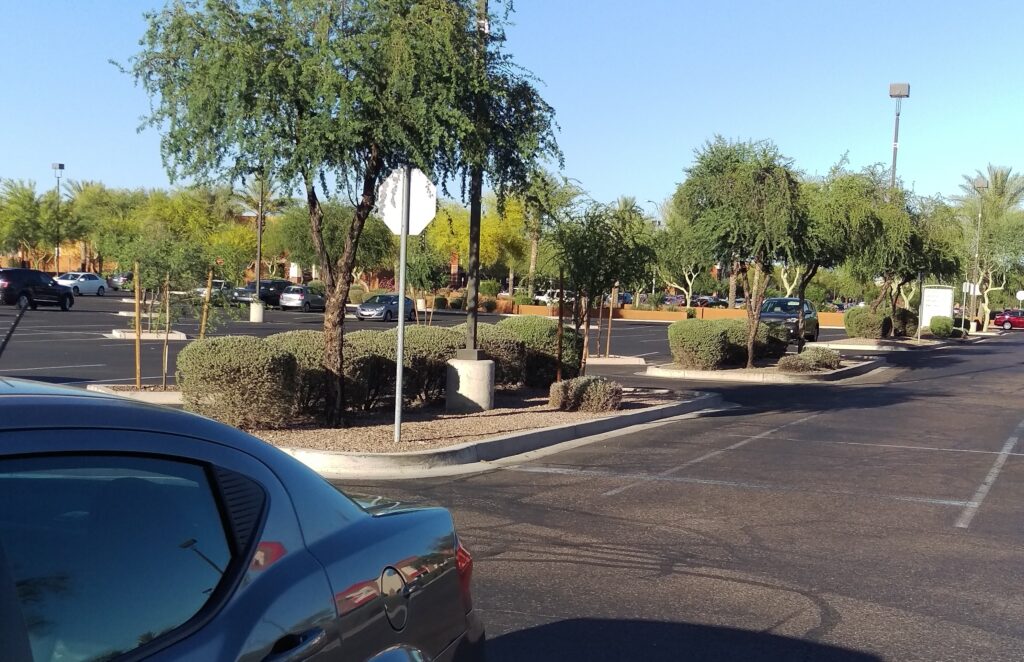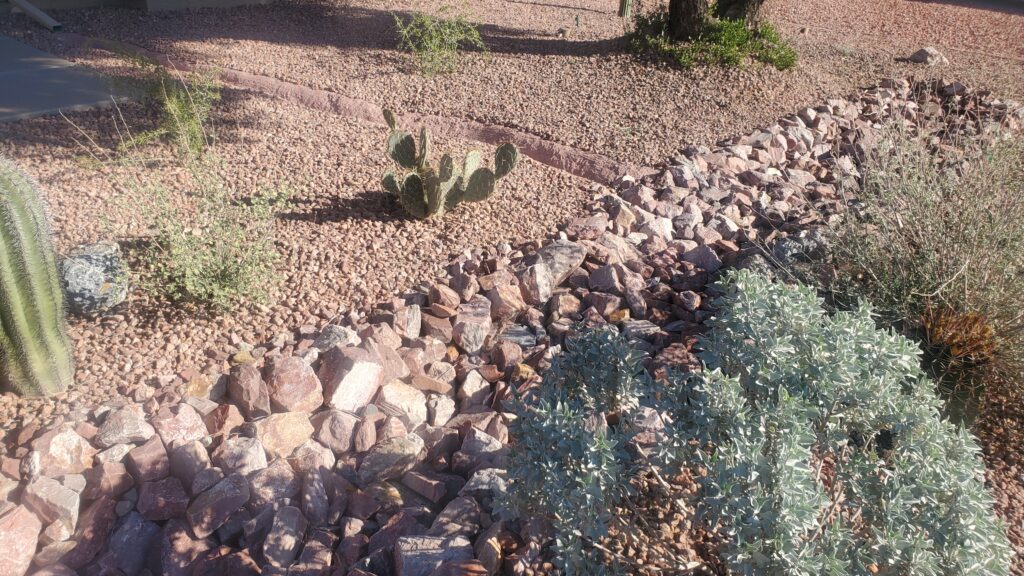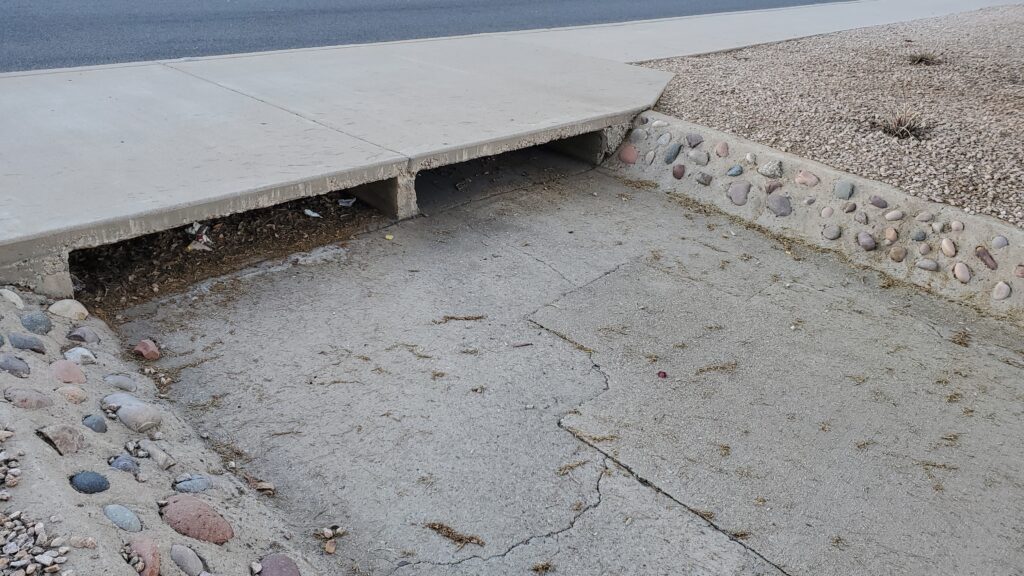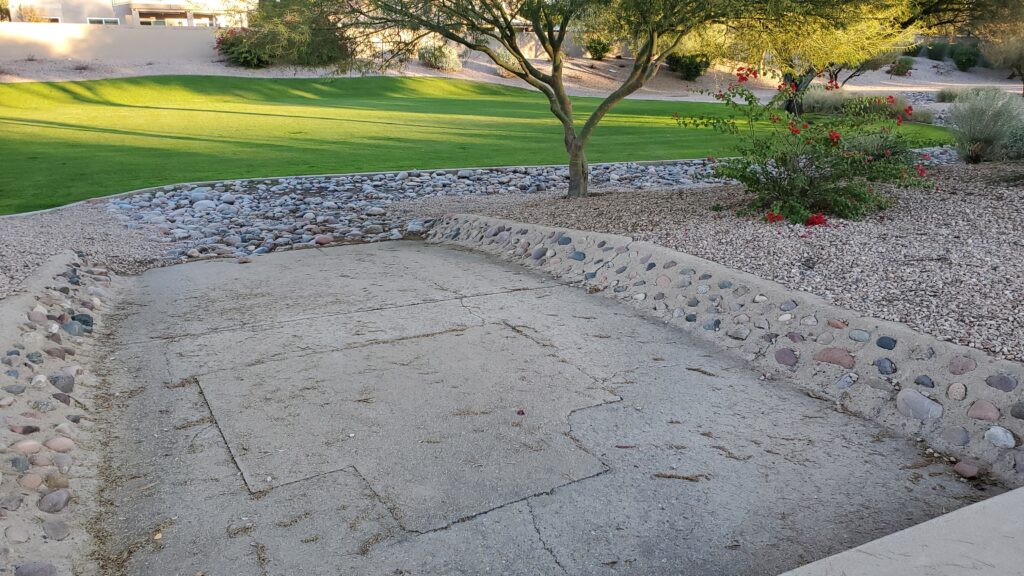
In Arizona, an enormous amount of land is paved over for streets, sidewalks, highways, parking lots, and driveways. There are many disadvantages of paving land:
- No plants can grow on paved land
- The pavement causes the heat-island effect that prevents the desert from cooling down at night
- It is not water permeable, which leads to more flooding and less ground water
- Rain water falling on pavement washes pollutants and garbage into stormwater drains that flow into rivers
- Animals cannot safely cross roads, so their habitat is fragmented and road-kill is common
- Pets burn their paws and can even be killed by walking on the hot pavement in Arizona in the summer
I am definitely an advocate for reducing paving. But until that happens, there are some techniques we can use with pavement to harvest runoff water, reduce flooding, and improve infiltration.
Route Runoff to Basins

When I was having the gutters installed on my house, the contractors wanted to route the downspouts onto my driveway, to run down into the street. This was a common practice, but it is now discouraged. Extra water in the street means that the city has to build larger stormwater drainage systems. The rain is initially clean water, but after running down the streets it can become polluted. Also, capturing rainwater locally reduces the need for irrigation with tap water.
Routing rainwater into basins in your garden is a better idea. It waters your plants with soft water, unlike the hard water we get from the tap in Arizona. This helps to leach salts from your soil. Many desert plants prefer an occasional deep watering to many shallow waterings. The deep water doesn’t evaporate as quickly, so it can sustain your plants for longer.
Curb Cutting

When an adjacent garden is at a lower elevation than the road, a curb cut can be used to collect water. The curb cut often runs under the sidewalk and down a small paved slope, into a basin in the garden. The road can collect huge amounts of water, so the basin must be designed appropriately.
Unfortunately, we often see the opposite type of design, where gardens are placed at higher elevation than the pavement. The rainwater runs off from the gardens into the paved areas. The plants cannot obtain enough water from the natural rainfall so they need to be irrigated. This is not good design. It deprives plants of water while encouraging flooding in roads and parking lots.

Permeable Paving
Permeable paving allows water to percolate through it. This is either through a porous material or blocks with gaps in-between them. There are many types of permeable paving, including pervious concrete, porous asphalt, pavers, and flagstone. Although I am not a fan of a lot of hardscape in a garden, it is imporant to remember that foot traffic kills plants and contributes to compaction and erosion. Also, without clear indication of footpaths, people will walk all over a garden, leading to greater destruction.
Reducing your driveway, using permeable paving, or harvesting runoff from your driveway are all good options. The best option will depend on your situation. How much driveway space do you need? What is the slope of your driveway? What is on the land that borders your driveway? Channel drains can be used to capture runnoff from a driveway.
